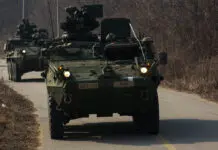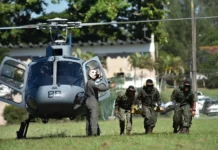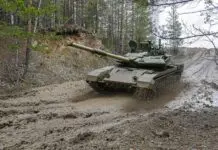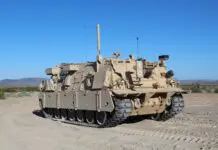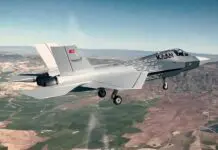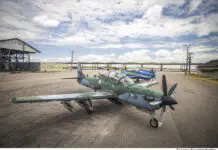After reviewing the main projects of the Navy and the Air Force, it is now time to address the initiatives of the Argentine Army for 2024, focused on modernization and material incorporation. These include ongoing projects, such as the update of the VC TAM 2C-A2, and acquisitions, such as Wheeled Armored Combat Vehicles, helicopters, among others.

One of the main ongoing projects of the Argentine Army is the modernization of the VC TAM 2C-A2, a program that aimed to consolidate the work line in Boulogne with the first batch of pre-series vehicles by the end of 2023. Recent developments related directly to the project include the arrival of components from Israel and the signing of a new agreement with IMPSA for the production of skirts.
It is worth noting that the modernization of the VC TAM not only involves the turret but also includes the recovery of the hull and automotive components, with the ultimate goal of having 74 modernized TAMs. Both initiatives have seen the arrival of material, as well as the signing of agreements and the start of various tender processes to maintain a constant flow of the necessary material for the update of the armored vehicles.
One of the latest updates on the TAM 2C-A2 project was provided a few months ago by the then Chief of the Army Staff, Lieutenant General Pereda. When asked about the progress and projection of the VC TAM modernization, Pereda stated that “…we have quite a few tanks already worked on, mechanized, changing parts. Components are arriving from Israel in the next fifteen days. I want to emphasize one thing about this: Up to tank number six, we have the assistance of the factory engineers (Elbit Systems). From number seven onward, they are our people, our engineers. So, it’s a big challenge. I don’t think this will extend into the summer because the kit, if I remember correctly, has 74 components. This means it’s a technical matter that requires delicacy, mechanical work, welding. The challenge is there, to continue in the summer…”.




Infantry Fighting Vehicles
One of the many long-term projects that has not yet moved into the execution phase is the acquisition of a family of Wheeled Armored Combat Vehicles, which will equip the yet-to-be-established Wheeled Medium Brigade of the Army.
Although the selected candidate is the Guarani 6×6 from Iveco Defense Vehicles, negotiations carried out by the previous administration failed to unlock the financing needed to finalize a purchase contract. Argentina and Brazil had signed a letter of intent for the acquisition of 156 Guarani VCBRs in January 2023, an agreement that at that time suggested that the project would finally be set in motion.
Despite the lack of definitions and delays in the decision on the IFV project being perceived as negative, the then Head of the Joint Chiefs of Staff of the Armed Forces, Lieutenant General Juan Martín Paleo, explained to Zona Militar that the evaluation of different proposals was a natural process and that its extension over time “…generated a drop in the prices of the offers, and they were improving. Iveco improved, and so it continued at the value they are at today, which is approximately half because General Dynamics, Iveco and Norinco, which are the three companies, are competing. It generates a positive synergy that can even be imprudent to accelerate a measure because, automatically, if one opts for an option, the companies compete and improve. (the proposal). It is a virtuous reality for us…”.
The 8×8 IFV produced by General Dynamics already had a precedent in 2020, with the authorization from the U.S. Department of State for a potential sale of 27 VCBR M1126 Stryker Infantry Carrier Vehicles. The proposed package included M2 Flex 12.7mm machine guns, a vision system for the driver AN/VAS-5, as well as complementary equipment.

The Stryker, along with the Guarani, were the candidates with the best considerations by the Argentine Army, as each IFV model presented advantages. In the case of the Iveco 6×6 armored vehicle, its strengths include proximity to suppliers, participation of the local industry, and integration with the Brazilian Army. For the U.S. 8×8 VCBR, it is highlighted that its purchase will benefit from the U.S. FMS program, the model comprises a true family of armored vehicles, and the participation of local industrial involvement is not ruled out.
The physical investment planned for the project amounts to USD 320 million, a figure derived from the 2024 budget. Regarding the scope of the project, it aims to incorporate 209 IFVs in the following versions: 120 Personnel Transport Vehicles armed with an M2 12.7mm machine gun; 27 Infantry Fighting Vehicles armed with a 30mm cannon; 14 Tank Destroyers; 12 Mortar Carrier Vehicles; 9 Ambulance Vehicles; 9 Command Post Vehicles; 8 Recovery Vehicles; 6 Bridge-Laying Vehicles; and 4 Breaching Vehicles.




Helicopters and Aircraft
Keeping modernization and tuning projects for its Bell UH-1H and AB-206B1, the Argentine Army also aims to incorporate Medium Utility Helicopters to recover the capacity lost with the retirement of the SA-330 Puma and the almost non-existent availability of the SA-332 Super Puma.
Over the past few years, the Army Aviation evaluated various options, including models from Airbus Helicopters, Leonardo, and the S70i Black Hawk from PZL Mielec. The project seemed to take its first steps with the signing of a letter of intent with Airbus for the purchase of twelve H215Ms, a signing that took place at the Paris Air Show 2023 held in Paris-Le Bourget in June 2023.
However, it is worth remembering that the signing of a Letter of Intent, despite representing a formal first step in negotiations, is not a binding type of document, freeing the parties from obligations. This condition allows the project to remain open to new offers.

As in other instances, the purchase of Medium Utility Helicopters for the Argentine Army has been included in the Public Credit Operations of the 2024 Budget. For the current year, the authorized amount is USD 400 million, while the project investment description details that the contemplated quantity is 20 aircraft.
Another acquisition project is the joint purchase of Bell 407 GXi helicopters, a project driven by the Joint Chiefs of Staff that has already seen the delivery of the first aircraft to the Argentine Air Force. It is planned that each force will have incorporated three helicopters in the coming years.
Regarding fixed-wing aircraft, the Army advanced with the purchase of a DA-62 MPP aircraft from Diamond Aircraft Industries GmbH, an acquisition included under Direct Contracting for Exclusivity No. 84/7-0061-CDI22 and authorized by administrative decision in July 2023. As reported previously, the aircraft will be configured with specialized systems for photogrammetry, topography, and cartography tasks. The original investment project contemplates the incorporation of five aircraft.

Field and Anti-aircraft Artillery
The Argentine Army has also considered a series of projects for the Artillery Corps, some of which are already in execution. It is worth noting that the initiatives yet to begin are of great relevance, such as the purchase of Self-Propelled Artillery Combat Vehicles and the Modernization of the Anti-Aircraft Defense System.
One of the most feasible programs to be implemented in the medium term is theone called “Recovery and modernization of 17 Self-Propelled Artillery Systems VCA CALIBRE 155mm L41 OTO MELARA ‘PALMARIA“, a project that constitutes a new phase in the work carried out a couple of years ago, which allowed the recovery of some of the artillery armored vehicles.
Although major details about the scope of the project have not been disclosed, Zona Militar has learned that the new phase of modernization of the “Palmaria” SPGs includes the incorporation of new technologies to bring some of the vehicle’s capabilities to current standards.

The Army also seeks to expand the capabilities of the Automated Field Artillery Fire Control System (SATAC), a local development initiative that integrates various elements and has “…the capacity to graphically represent the tactical situation on a Geographic Information System (GIS), track and visualize the status and situation of available fire agencies, and the ability for the tactical direction of fires and technical direction of shooting. The capabilities it provides to the artillery allow for a considerable reduction in the time to engage a target, and it can also be used in secondary tasks such as surveillance and control…”. Zona Militar was able to witness some of the benefits of SATAC during the last edition of the artillery and fire support exercise “Escuela de Fuego II,” a deployment coordinated by the Army Artillery School that took place in the Salinas del Bebedero, province of San Luis.
The improvement of artillery capabilities also includes the acquisition of various sensors, including radars. The Artillery Corps will also benefit from the Multi-Year Ammunition Acquisition Plan promoted by the Joint Chiefs of Staff, an initiative that included the acquisition and local manufacturing of 105mm and 155mm projectiles.
Undoubtedly, two of the most ambitious projects of the Argentine Army are the acquisition of 72 self-propelled artillery combat vehicles for the Mechanized/Armored Brigades and the Modernization of the Anti-Aircraft Defense System. For the latter, some steps have already been taken with the incorporation of the first launchers and missiles of the short-range RBS 70 NG missile system, as well as the signing of an agreement with INVAP for the development and manufacture of three tactical anti-aircraft defense radar systems RMF-200V.




As reported a few months ago, the anti-aircraft defense capability recovery project plans to purchase short-range (RBS 70 NG) and short/medium-range (SPADA 2000) missile systems, modernization of the 35mm Oerlikon GDF pieces, acquisition of radars (Giraffe type, as indicated by the INVAP development), off-road vehicles, simulators, and all associated material for the maintenance and training of operators.
In the case of the program for the purchase of 72 self-propelled artillery combat vehicles, the project opted for a hybrid solution, as the Elbit ATMOS and the M109 KAWEST were selected. The latter corresponds to a version developed for the Swiss Army, which incorporated a 155/47 chromed bore cannon with a 21-liter chamber and a lifespan of 10,000 shots at maximum load, semi-automatic loader, additional ammunition compartment mounted on the rear of the turret, a hydraulic safety for remote control barrel movement, Halon fire extinguishing system in the driver and crew compartment, a new electrical system, wiring, navigation system, among other improvements.
The renewal of the 155mm pieces is due to the age and characteristics of the equipment, which not only has several decades of service but is also far from current standards. The conflict in Ukraine has once again highlighted the importance of artillery and the need to have stocks in quantity (pieces and ammunition), relevant points that can be addressed by the mentioned projects.
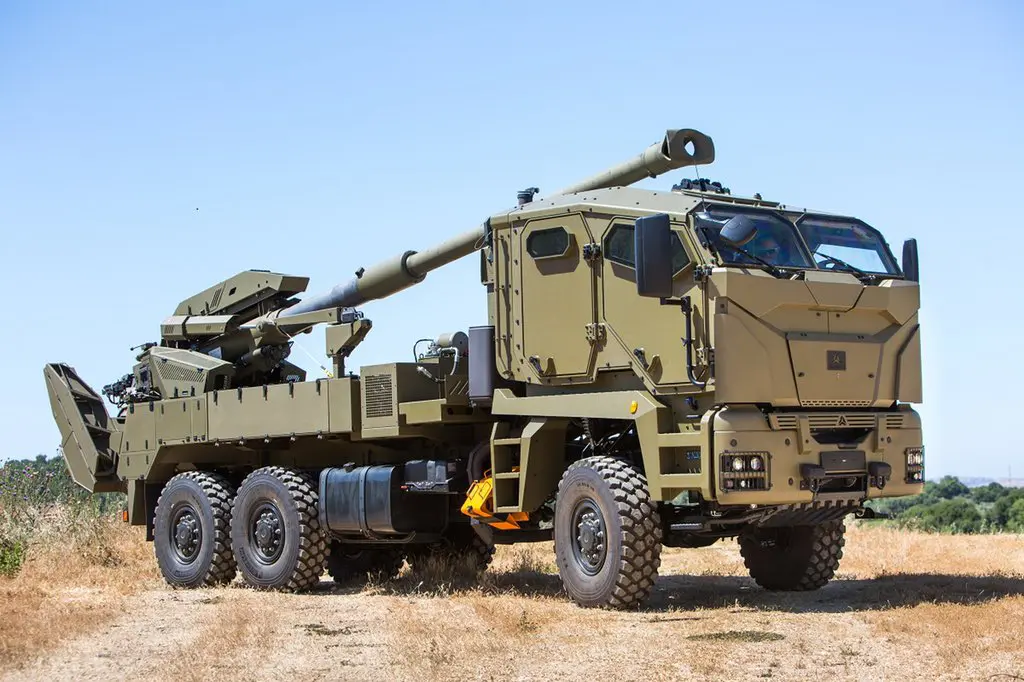
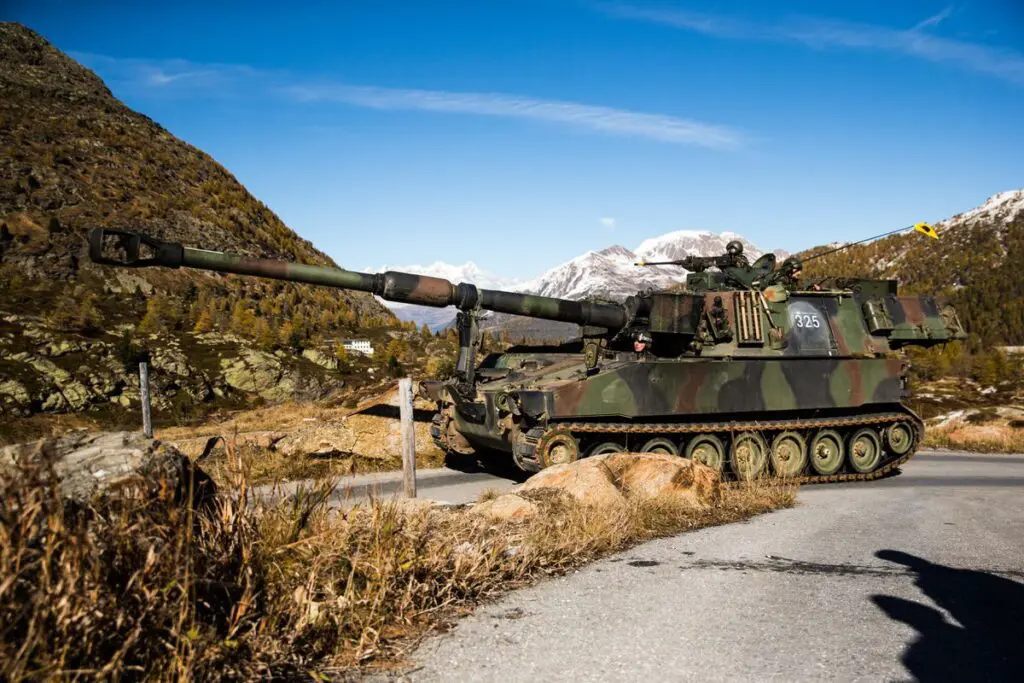

Recovery and Vehicle Purchase
Facing logical difficulties to cope with a massive plan for the renewal of its fleet of general-purpose and campaign vehicles, the Argentine Army carried out a series of tenders in 2023 for the purchase of material, initiatives that in many cases were paralyzed due to the country’s economic situation.
Knowing perfectly well the limitations to acquire new material, the Army continues to maintain initiatives aimed at the recovery and tuning of some of its most popular models, such as the Unimog 416 trucks and the MB 230 G jeeps. It is worth remembering that for the latter, the Army inaugurated the San Lorenzo Vehicle Recovery and Modernization Plant at the beginning of 2023.
As we reported, “…with the works completed, the new plant of the Argentine Army will be able to carry out the recovery, repair, and modernization of wheeled vehicles of the force weighing up to 15 tons. Among the work that can be carried out are preventive, predictive/corrective maintenance, and non-destructive tests, comprehensive review of all systems/subsystems of the vehicles…”.
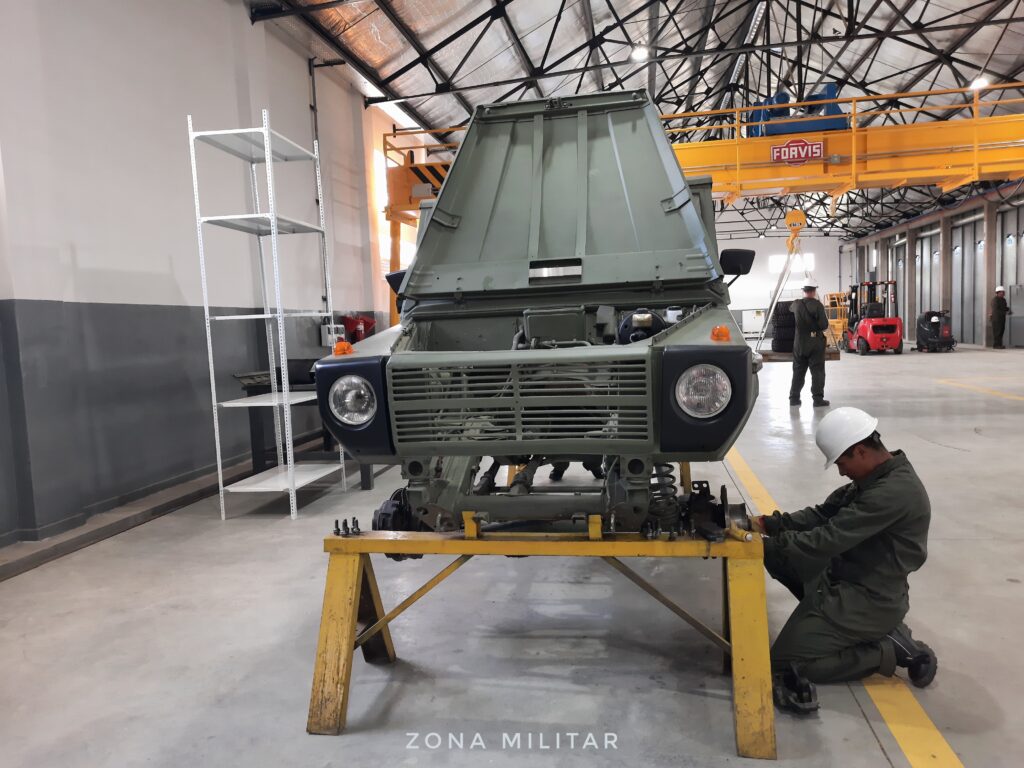
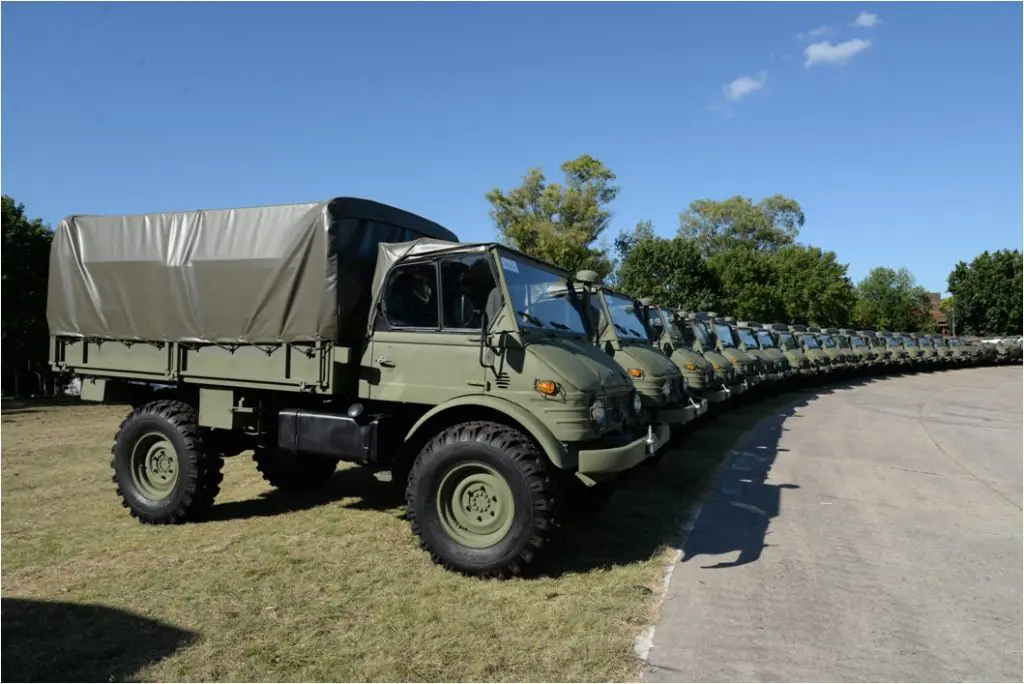
One of the ongoing projects is aimed at standardizing the conversion of the MB 230G to a reconnaissance configuration with the incorporation of a tubular structure with a 360° ring and mounts for an FN MAG machine gun, individual seats in the rear, and additional accessories to accommodate equipment. The final configuration of the kit bears some similarities to the variants of the popular Mercedes Benz G-Wagon, models that are used by special forces and reconnaissance elements of various armed forces.
As for acquisitions from 2024, the Public Investment Plan 2024-2026 contemplates that the Argentine Army will initiate three projects to incorporate a total of 197 vehicles, including 4×4/4×2 trucks (66 units), 4×4 trucks (30 units), and Mobile Intensive Care Unit ambulances (57 units). The mentioned plan also includes a fourth program for the purchase of 44 medium buses with 19 seats.
As we have mentioned on more than one occasion, the replacement of decades-old equipment should be approached under a multi-year project that guarantees the incorporation of new material and, why not, that is extensive to all the Armed Forces in order to standardize models in service. From this perspective, we understand that local circumstances put us far from this ideal; however, it is unacceptable for men and women of the Army to continue operating vehicles that are double or triple their age, with all that it entails.
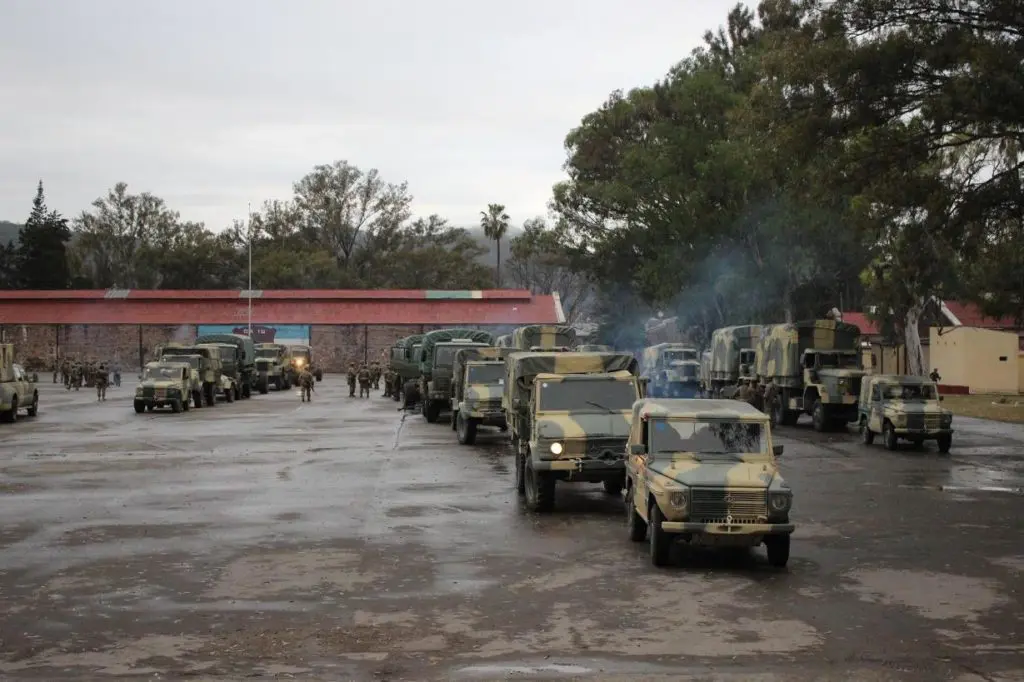
Given the number of ongoing projects and pending approval, they will be addressed in a future publication.
You may also like: Iran near ICBM capability




